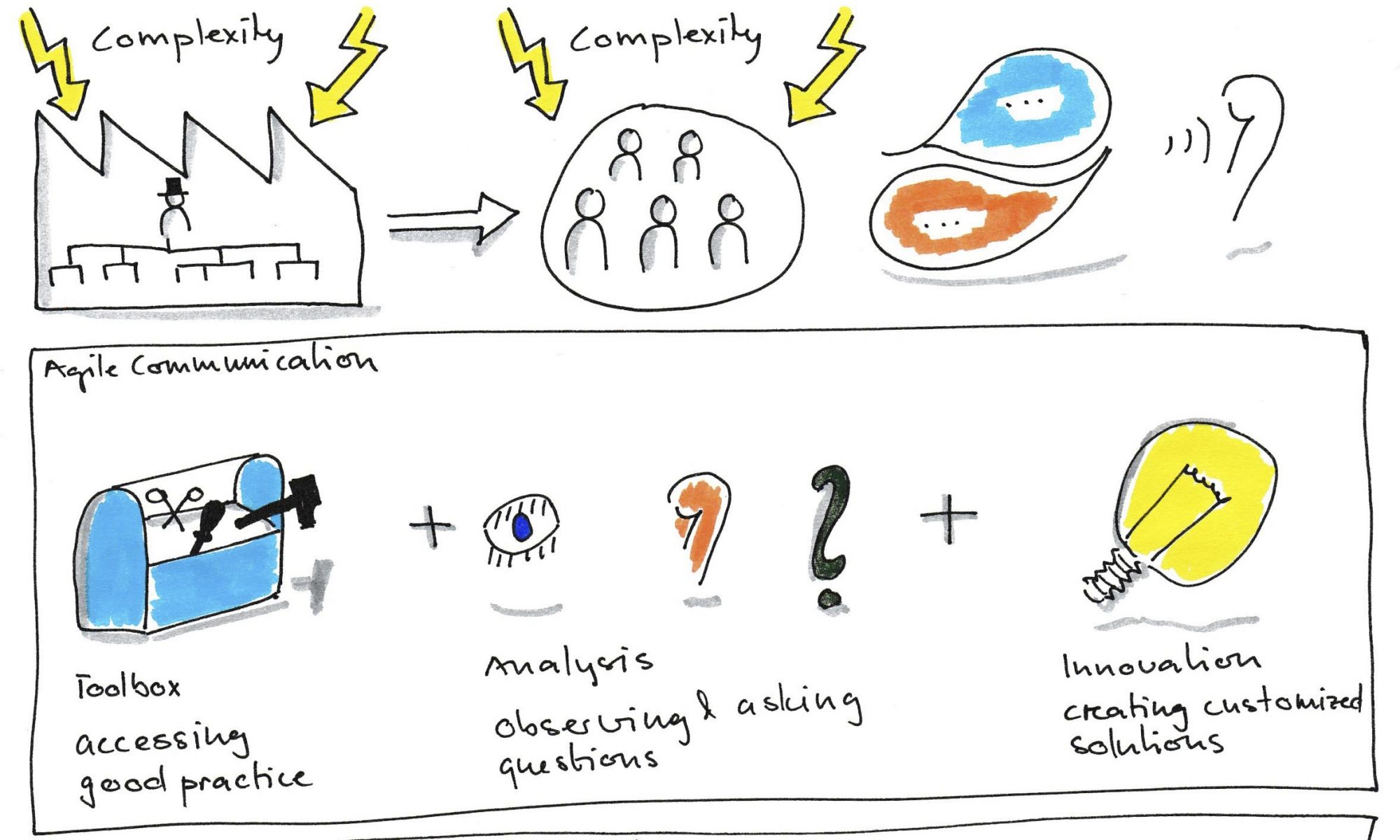Someone asked me how you can improve interpersonal communication. I needed a while before I understood the question: It is about the process of finding solutions and of what these solutions can be. I use to work iteratively. That way you get a lot of feedback and insights in the problem and the possible solutions while working on new tools for communication.
Before solving anything you need to analyze what the problem actually is. Design Thinking spends half of the whole process in focussing on the problem. I like that: Else you might end up with a solution for a problem you don’t have. But what does analyzing mean? Go and observe („gemba“ / „gembutsu“ in kaizen), talk to the people, ask them questions. For this you need to listen actively and carefully, since people tend to confuse symptoms and causes and most of the things you will hear actually are interpretations. Additionally there are a lot of blindspots: Things that people in the situation do not register at all. A Good start are open questions: Why do you…? Once you think you realized what the problem is about you have to check and get feedback on your hypotheses.
Established tools and innovations
There are a lot of existing communication tools and techniques, some of them quite old, others recently invented or derived of well established instruments. With a little experience you can draw on a wide range of resources (I am currently working on a book about existing agile communication tools). In reality every situation is very unique and therefore you might need to customize a good practice to make it work in a special situation. When someone tells me about a problematic communication situation I usually overflow with ideas for solving them but only in the discussion I can sort out what could actually work due to factors like working space, working rhythms or overall goals.
I once gave the example of the „agile Eisenhower“, an extended Eisenhower Matrix for agile prioritization I developed with a coachee. It wasn’t sufficient to find the abstract tool there: We also had to find proper materials to work with and a proper place to put it so that the tool actually would get used in the everyday live situation. Therefore, to find an adequate tool you have to know about the situation, the habits, the atmosphere.
Understanding the solution
As I mentioned: Before advising people what to do you have to understand their problem. When you come up with a possible solution they have to understand how it works. I talked to an engineer about „Management by Walking Around“. I thought that this was a good possibility to increase understanding between engineering and management. He told me that it felt weird. He only understood the concept when we discussed it in detail. Before, he always felt very controlled when one of the managers strolled around every day to look how they were doing. Usually the manager appeared exactly at coffee break time. Now, we don’t know about the manager’s intentions. In benefit of the doubt let’s assume he sincerely wants to know about his teams and not control them, but is missing communication skills to start a conversation. What can they do about it (since it wasn’t the manager who asked me I have to advice the team)? They could invite him to have coffee with them. They could ask him questions. They could offer him some information about what is going on. If they’re lacking small talk skills, too, they could prepare some conversations starters.
Creating agile communication tools means that you always consider agile values. It means that you base your solutions on empirical process control – transparency, inspect, adapt – and work iteratively: Get feedback and reflect on what and how you do it. Whether you use proven tools and techniques or create new customized ones – you always have to focus on the goal, the situation and the applicability.
